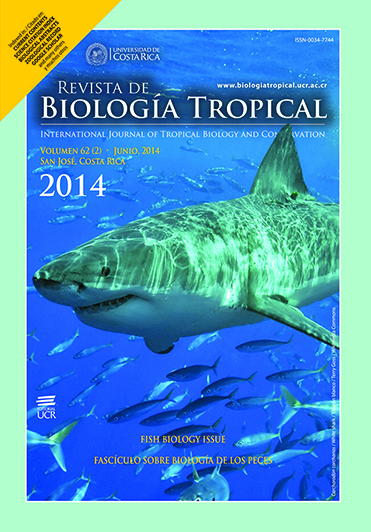Abstract
The Brazilian Atlantic Forest presents high levels of richness and endemism of several taxonomic groups. Within this forest, the Orchidaceae may be highlighted as the richest family of Angiosperms found there, and is highly threatened due to collection and habitat destruction. The inselbergs of the BrazilianAtlanticForestare mostly unknown regarding their floristic composition, but the available information points to occurrence of endemic species, with adaptations to survive to this dry environment. The objectives of this study were to conduct a floristic survey of the Orchidaceae species on the Maciço do Itaoca, an inselberg located in the Northern region of the State of Rio de Janeiro, make a comparative analysis with other sites in Eastern Brazil, and discuss the geographic distribution, floristic relationships and conservation status of the orchid species present on the inselbergs. The floristic composition of the study area was compared with 24 other locations in Eastern Brazil(of which 13 are inselbergs) and the influence of the types of surrounding vegetation on the composition of the Orchidaceae flora on the inselbergs. On Maciço do Itaoca we recorded 18 species from 17 genera: Brasiliorchis picta, Brassavola tuberculata, Campylocentrum robustum; C. sellowii, Catasetum luridum, Cattleya guttata, Cyclopogon congestus, Cyrtopodium glutiniferum, Leptotes bicolor, Lophiaris pumila, Miltonia moreliana, Oeceoclades maculata, Phymatochilum brasiliense, Prescottia plantaginifolia, Pseudolaelia vellozicola, Sarcoglottis fasciculata, Sophronitis cernua. and Vanilla chamissonis. The highest floristic similarity was with the Pedra da Botelha (0.43), an inselberg located in the North of Espírito Santo. This result is probably due to the similarity in altitude and distance from the coast in both areas despite the geographical distance between them. Apparently, little influence is exerted by the types of surrounding vegetation on the composition of the flora of inselbergs, due to their unique environmental characteristics which exert a strong selection pressure on plants that are adapted to survive on these inselbergs. The threats observed to the species on this inselberg are the same as for other inselbergs and include the collection of ornamental species, fire and quarrying. Specifically for the Maciço do Itaoca, a possibility for conservation may be the annexation of this area to theDesenganoState Park, an important conservation area in the Northern of the State ofRio de Janeiro.
Comments

This work is licensed under a Creative Commons Attribution 4.0 International License.
Copyright (c) 2014 Revista de Biología Tropical






